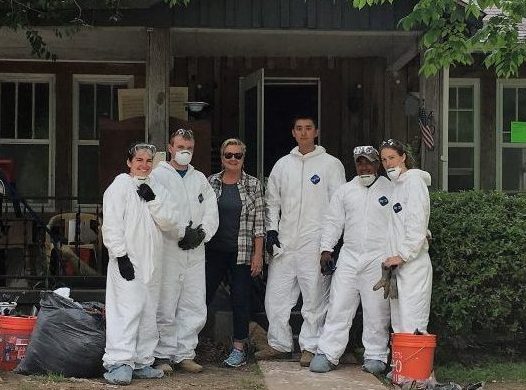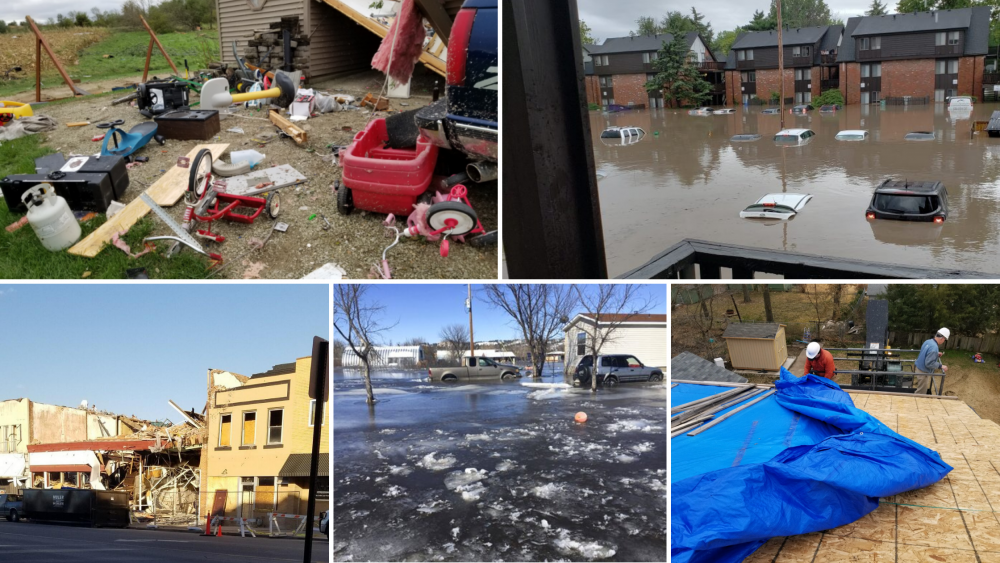Establishing An Early Recovery Fund: Lessons for Funders
Nancy Beers was the founding director of the Center for Disaster Philanthropy’s (CDP) Midwest Early Recovery Fund. On the eve of her retirement in December 2020, she sat down with CDP’s Tanya Gulliver-Garcia, to discuss the lessons she learned over her six years of running the Fund. Question: What is “early recovery” and how does […]

Nancy Beers was the founding director of the Center for Disaster Philanthropy’s (CDP) Midwest Early Recovery Fund. On the eve of her retirement in December 2020, she sat down with CDP’s Tanya Gulliver-Garcia, to discuss the lessons she learned over her six years of running the Fund.
Question: What is “early recovery” and how does it differ from response or the mid-to-long-term recovery that CDP usually focuses on?
Answer: Early recovery is best described as the stage in-between response and long-term recovery. Response is the first stage where responders “get people to safety,” help them get stabilized and start clean up. Recovery is the stage where disaster-affected individuals start to work toward a new normal. They determine if they can still live in their home, and if so, look to figure out where they will get the money to repair their home. Recovery can take years. Early Recovery is probably the most critical stage of the disaster for funders to begin to step up. It is when people are waiting for someone to tell them what to do and how to recover. They are in need of help but are not seeing the support they need. Funders need to continue that support through mid- and long-term recovery as well.
Question: Why is it important for funders to invest in early recovery and how should they do it?
Answer: The earlier funders begin to invest in recovery, the more successful the community’s recovery will be. Early recovery sets the stage for success, but it must be followed by ongoing recovery dollars. Funders should find and fund a local partner who is already embedded and respected in the community and work with them to determine the current and ongoing needs. By investing resources locally and providing generous grants to build authentic capacity, funders can kickstart a community’s recovery. Post-disaster, that organization (and the broader community) is going to need a lot of support – both financial resources and technical assistance – moving forward. Funders should be prepared to provide operational and programmatic grants to cover disaster case management, rebuilding, business recovery, long-term recovery groups (including operations and meeting recovery needs) and basic survival needs.
Question: What do you think funders might not know about the Midwest that is important for disaster recovery?
Answer: There is extensive diversity in the rural Midwest and Indian Country that is often overlooked. There are also pre-existing vulnerabilities and challenges to working in this area. Some of the most diverse communities in the country per capita are in this region. Many communities are 100% Native American. One of ERF’s grants is for the small town of Columbus Junction in Iowa. It has a population of 1900 people, nearly half of whom are Latinx. More than 25% is non-white – including a large Chin community – and most people are employed by a single employer – the Tyson meatpacking plant. The local school district, which includes Columbus Junction, is composed of 50% Hispanic students, 20% Asian students and 30% white students. About half of the students do not speak English as their primary language. And yet, schools do not have funds for sufficient interpreters in their schools, and like so many rural schools, do not have access to enough technology to keep their students engaged. Many people in the Midwest are food insecure. There have not been enough investments in infrastructure to keep smaller, more rural communities safe from the onslaught of disasters. Many, if not most, rural communities have little to no emergency management, insufficient mitigation plans, etc. These gaps leave too many people are in harm’s way.
Question: Can communities recover on their own or with government assistance?
Answer: Most communities do not have the ability to develop a long-term recovery process without additional support from “someone.” Most people do not realize that it is really no one’s actual job to help individuals and households in a community recover. Infrastructure is the responsibility of the state/county, but someone’s home is his/her own property and it is up to individuals to repair and fix their own homes. Without resources and a coordinated plan – many people are not able to fully recover their homes, their personal property or their mental well-being. This support can include financial resources for individual homeowners, but technical assistance or disaster case management is probably the most important need. ERF often funds organizations to hire disaster case managers to help build capacity within a community to recover.
Question: What final advice do you have for funders in light of so many outstanding issues?
Answer: Stay in your own lane. We cannot do everything; we are not in charge of making a community whole again. That is the work of each individual community – from the government down to each individual. But we can participate with integrity and make good decisions every time we invest in a community by doing our homework and investing in those serving those most in need.
CDP is working on a manual to help funders and communities develop their early recovery funds and programs. In the meantime, we encourage those with questions to contact Cari Cullen, program manager of CDP’s Midwest Early Recovery Fund.
More like this

Lessons in data-driven disaster recovery

